OUTDOOR AREAS NEAR BUILDINGS
Outdoor areas near buildings can be both private and public. As a rule, the greatest leeway is given to the design and security of private homes.
When protecting outdoor areas near buildings, it is important to work on a comprehensive security strategy for both outdoor areas and buildings. It is also important that security is designed in layers, working outside in, according to the principle perimeter, stand-off zone, building exterior, section, cell. Attention should be paid to the planning layout in terms of, e.g., access situation, building location, etc.
The primary security solution of outdoor areas often follows the perimeter, ensuring the greatest possible security distance from the building (the stand-off zone) and thus the longest possible response time to a threat. However, there may be projects where a more open access situation is needed or desired on the external areas, e.g. large surrounding car parks. In this situation, the perimeter cannot be secured. Instead, the outermost layer of security can be placed in the stand-off zone, protecting the building and nearby building areas while allowing unrestricted access and flow in the more remote areas.
The area between the building and the outermost layer of protection can be designed to provide good visibility conditions, which can be supported by detection measures.
The starting point for the examples shown is a recessed building location and a primary protection of the building and arrival areas via the perimeter: the last example, however, has primary protection located in the stand-off zone.
In addition, there is vehicular access to parking and arrival areas and unrestricted pedestrian access.
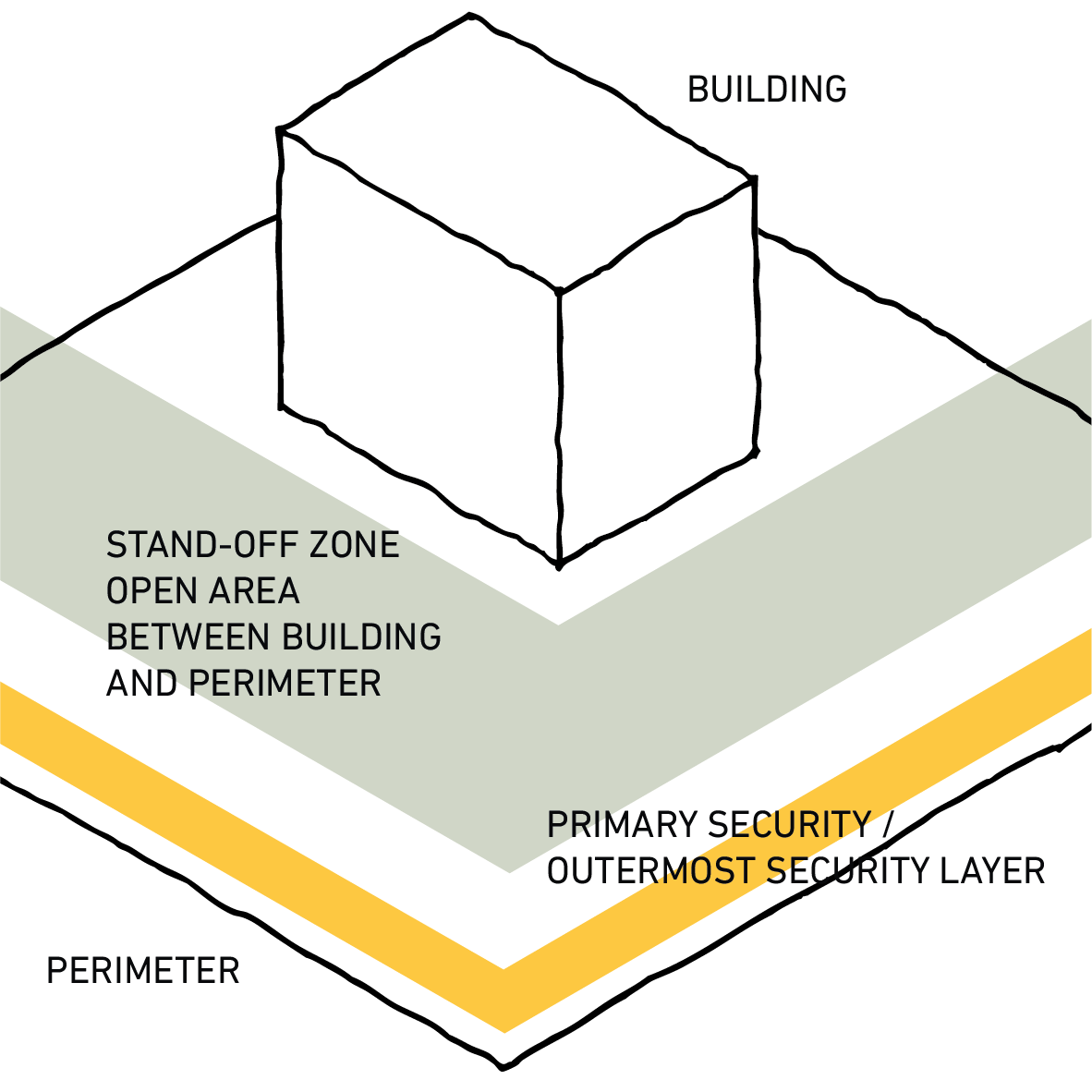
Security of the building and its outdoor areas
Focus on perimeter and access restriction.
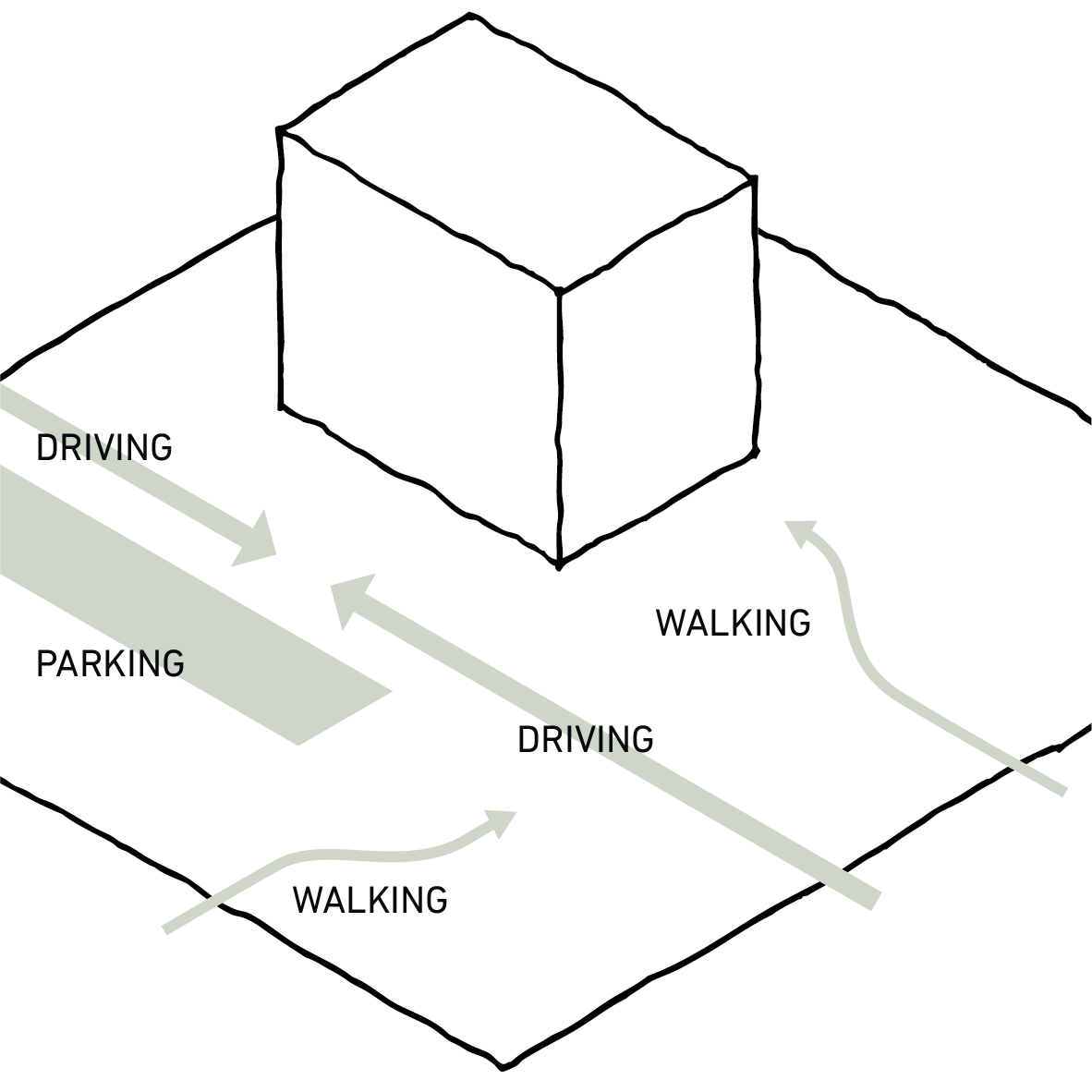
Arrangement
Focus on building location in relation to security distance, access without the possibility of driving directly towards the building or front area, possibly including natural speed reduction, access conditions for pedestrians and possibility of escape/evacuation.
Security wishes
Access restriction.
Removing the possibility of vehicles accelerating towards the building and the nearby outdoor areas.
Create blast stand-off distance to building.
Good conditions of overview in relation to possible detection.
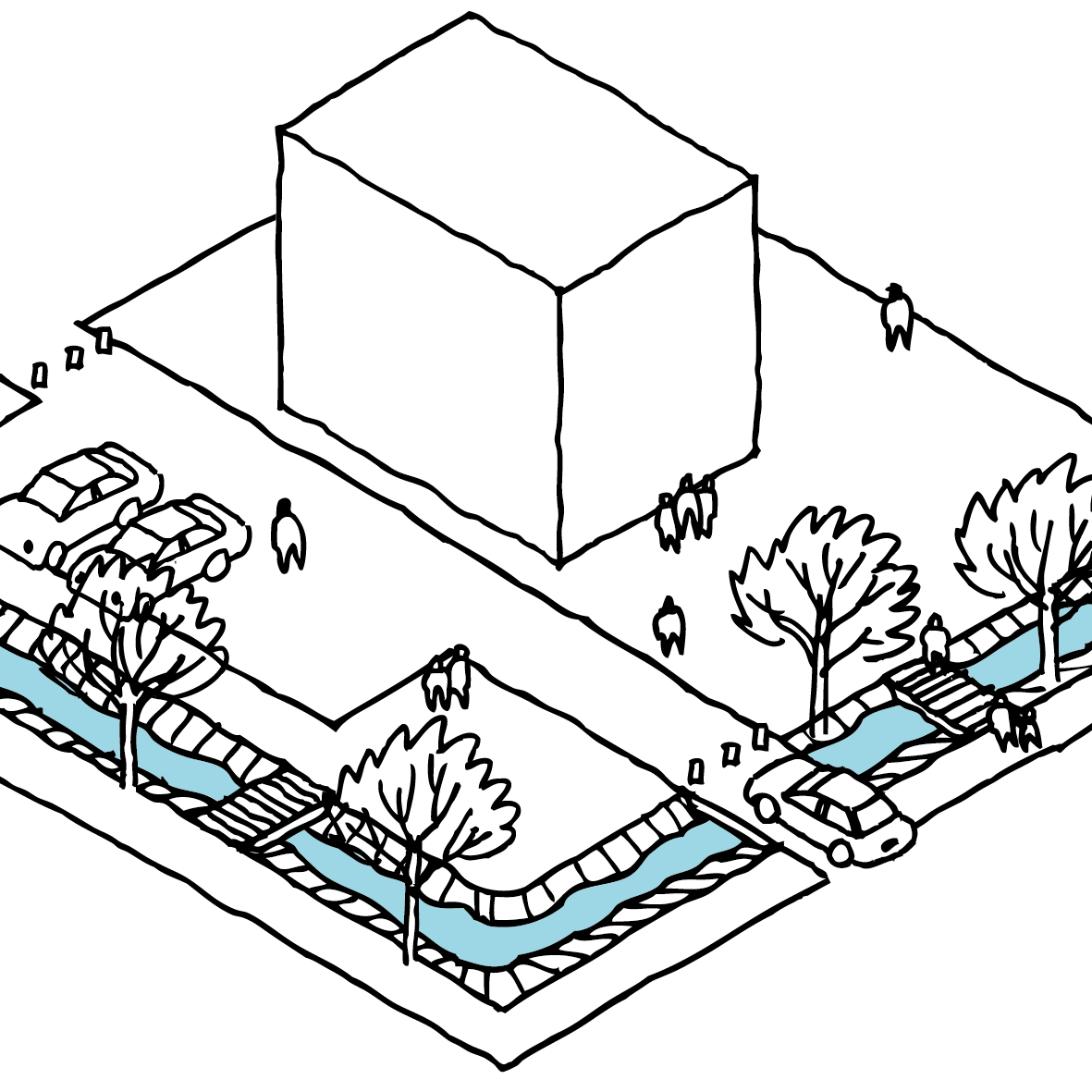
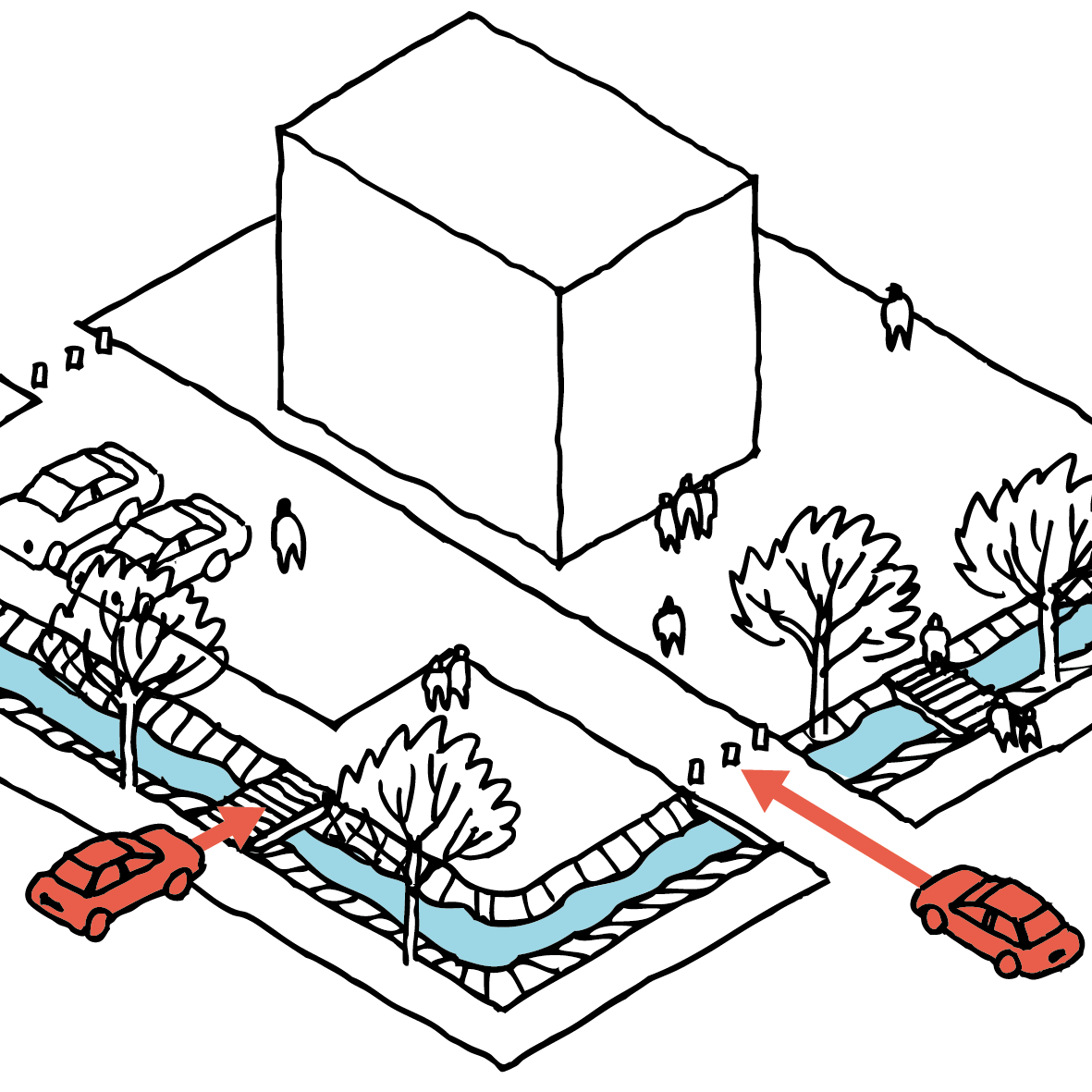
Ditch and access restriction
The ditch with water is part of the area's perimeter and constitutes the outer layer of security. In addition to being a protective measure, the ditch can also be considered part of a local climate solution.
The access road is parallel to the facade to ensure proximity to the entrance but without the possibility of driving directly towards the building. This can be supplemented with traffic calming measures e.g. bends, bumps, chicanes, etc.
Scalable access control solution via retractable bollards is incorporated.
There is unrestricted access for vulnerable traffic users via bridges. The bridges are dimensioned so that parts of them will be destroyed by a sudden impact, e.g. by a car.
Emergency access for rescue and evacuation is provided via a minimum of two access routes.
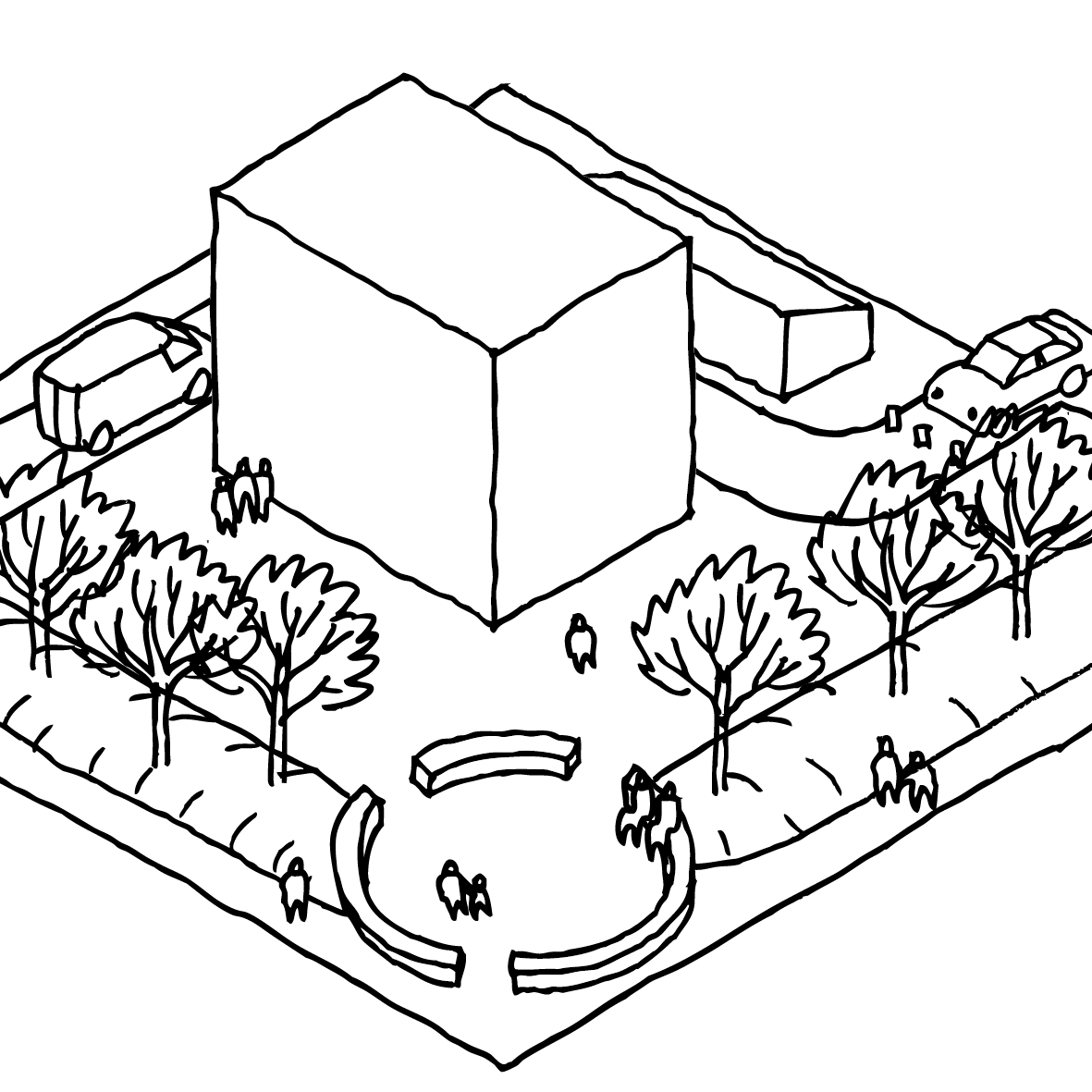
Bunds
Bunds and space provide the primary perimeter protection for the "front" of the site. The bund is designed as a low, planted embankment with steep, sloping sides.
There is unrestricted access for vulnerable traffic users via the small transit areas in the bunds. The site's retaining walls are designed to prevent the passage of vehicles.
The access road is designed to run parallel to the facades to ensure proximity to the entrance, or goods and deliveries areas, but without allowing vehicles to drive directly towards the building. The road is supplemented with speed-reducing curves.
Scalable access control solution via retractable bollards is incorporated.
Access for emergency and rescue services is provided via a minimum of two routes.
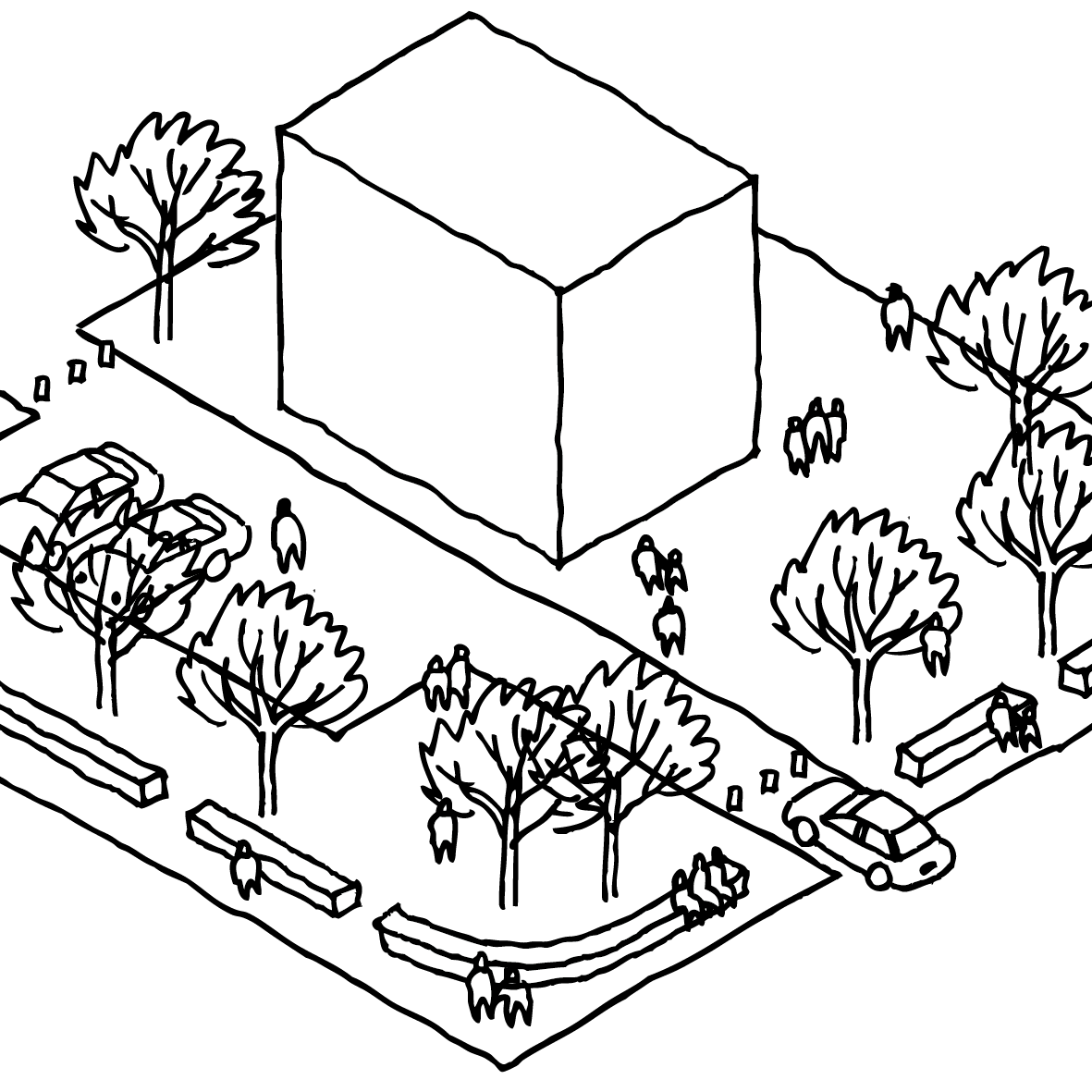
Retaining walls
The low retaining wall runs alongside the outer perimeter.
In addition to protecting the area, it can be used as an active element for people to hang out.
There is unrestricted access for vulnerable traffic users via the small passages in the retaining wall.
The access road is parallel to the facade to ensure proximity to the entrance but without allowing vehicles to drive directly towards the building. This can be supplemented with a speed-reducing design for the road, e.g., bends, bumps, chicanes, etc.
Scalable access control solution via retractable bollards is incorporated.
Access for emergency and rescue services is provided via a minimum of two routes.
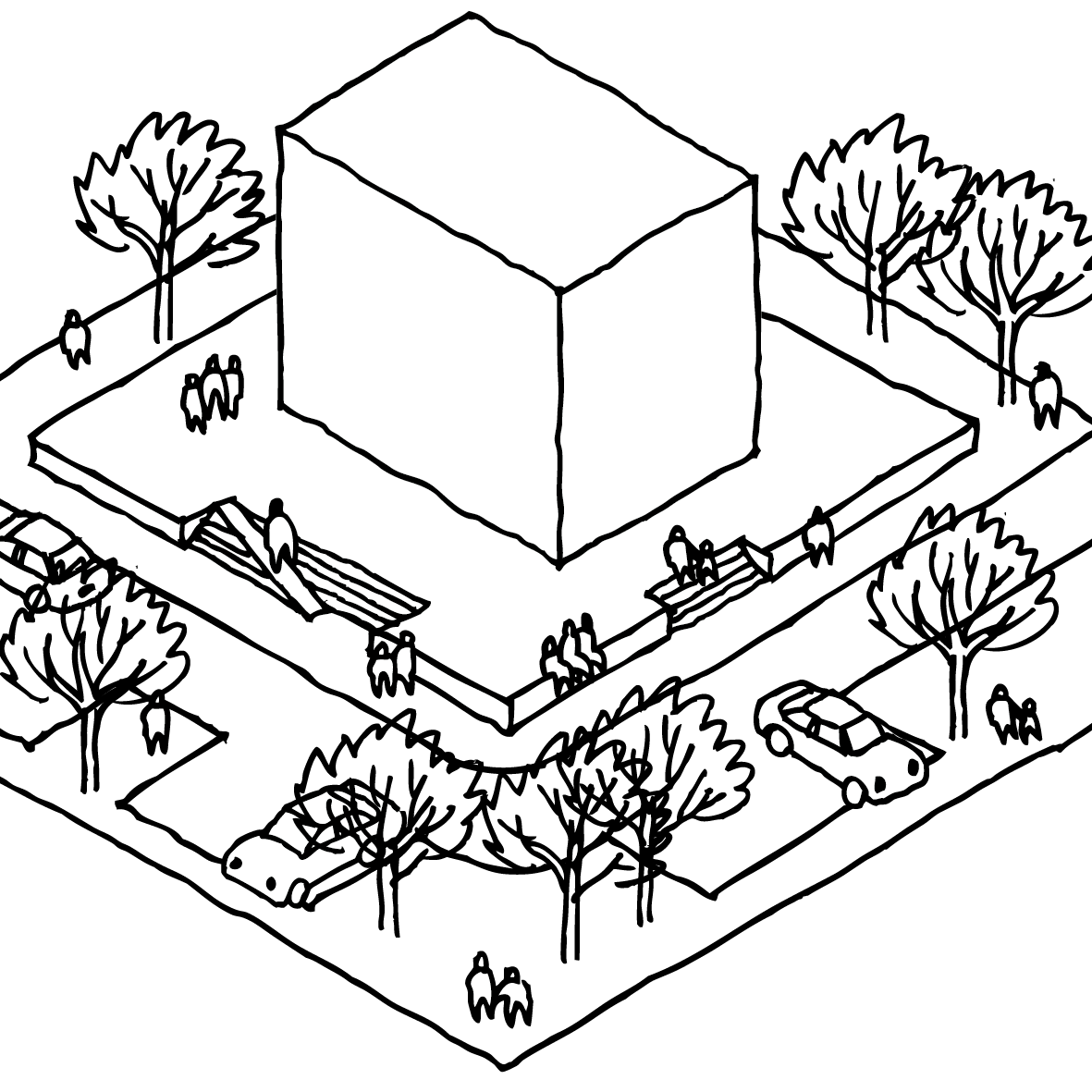
Building on a plinth
Instead of securing the perimeter, the outer security layer of the building is pulled back and placed in the stand-off zone. The plinth protects the building and the nearby building areas from vehicle impact.
In addition to serving as a protective security measure, the plinth can be used for seating and possibly combined with the need for climate change adaptation/flood protection.
The withdrawal of the outermost layer of protection allows a more accessible arrangement of the outer areas where access and flow can be unrestricted.
The plinth is designed so that edges do not pose a hazard in daily use, during escape or evacuation.

